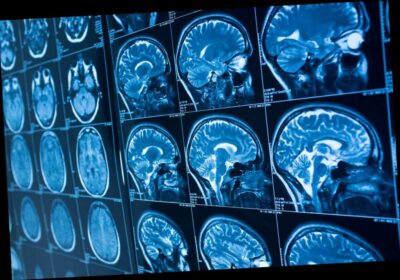Mysterious brain disease causing hallucinations probed in Canada

More On:
brains
Pen and paper boosts memory more than smart devices: study
Seven-year-old sells lemonade to fund her own brain surgery
Young woman with neurological disease writes book using eyes
Here’s when Elon Musk says Neuralink could start implanting chips in human brains
More than 40 people in Canada have reportedly contracted a mysterious brain illness — with symptoms resembling those in a rare and fatal illness, including memory loss, hallucinations and muscle atrophy.
Officials alerted doctors in the New Brunswick province this month that they were monitoring a cluster of 43 cases of a neurological disease of unknown cause, The Guardian reported.
The first identified case dates back to 2015, but in 2019 there were 11 cases and 24 in 2020. Researchers believe five people have died from the disease, according to the news outlet.
There have been six cases so far in 2021, according to CBC News.
Residents first learned of a probe last week after a leaked memo from the local public health agency asked doctors to be on the lookout for symptoms similar to Creutzfeldt-Jakob disease, a fatal brain disease caused by misformed proteins known as prions.
“We are collaborating with different national groups and experts; however, no clear cause has been identified at this time,” read the memo, The Guardian reported.
Some of the symptoms — including memory loss, vision problems and abnormal movements — triggered an alert with Canada’s CJD surveillance network.
But despite the initial similarities, screening produced no confirmed cases of CJD, according to the news outlet.
“We don’t have evidence to suggest it’s a prion disease,” said Dr. Alier Marrero, a neurologist heading the New Brunswick investigation, adding that patients initially complained of pains, spasms and behavioral changes.
Their symptoms could also be diagnosed as anxiety or depression, he noted, but over 18 to 36 months they began developing cognitive decline, muscle wasting, drooling and teeth chattering.
A number of them also began experiencing scary hallucinations, including the feeling of insects crawling on their skin, according to the report.
In addition to CJD, the symptoms also are similar to some of its variants, including mad cow disease, or bovine spongiform encephalopathy, the CBC reported.
To rule out other possible causes like dementia, neurodegenerative disease, autoimmune disorders and possible infections, Marrero’s team conducts an extensive study of the patient’s history, as well as a battery of tests including brain scans, metabolic and toxicology tests and spinal taps.
“We have not seen over the last 20-plus years a cluster of diagnosis-resistant neurological disease like this one,” Michael Coulthart, head of Canada’s CJD surveillance network, told The Guardian.
A majority of the cases have been linked to the Acadian peninsula, a sparsely populated region in the northeastern part of New Brunswick, which has a population of fewer than 800,000.
Valerie Sim, a researcher at the University of Alberta, said experts “don’t really know if we even have a defined syndrome.”
Share this article:
Source: Read Full Article

